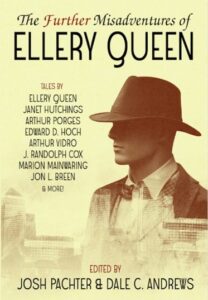 by Arthur Vidro, from the Winter 2023 issue of Calliope, reprinted with permission.
by Arthur Vidro, from the Winter 2023 issue of Calliope, reprinted with permission.
As a child I attended a free summertime performance at an outdoor public skating rink of You’re a Good Man, Charlie Brown. In the story, over a school holiday the Peanuts children are required to write a one-hundred word report on Peter Rabbit. The word requirement sounded colossal to the little kids. While Charlie Brown felt too bewildered even to begin, Lucy raced right in with her essay, which began, according to my memory:
“There is a rabbit in the story, and the name of the rabbit in the story is Peter Rabbit.” Already she had nineteen words. But that wasn’t good writing. For she repeated herself, saying things twice.
Too many writers needlessly repeat themselves.
Repetition is one element I’m forever pointing out to writers.
Here are examples from clients in 2022:
“She pushed aside her Visa credit card bill. She hated to look at that thing.” I said to use “Visa bill” or “credit card bill” but not “Visa credit card bill.” It would be like saying a “Coca-Cola soda bottle.”
“Sitting next to her was a huge burly six and a half foot, 320-pound NFL defensive back type.” Told the writer if you’re telling the readers the guy is 6’6 and 320 pounds, then the word “huge” isn’t needed. Also told him defensive backs are lean and built for running, and to change “defensive back” to “defensive lineman.”
“… a short, five-foot-four woman standing in the door. Her long, slightly curled brown hair landed just below her shoulders.” Told the writer to delete “long” since he’s already telling us the hair’s length of descent, and to use either “short” or “five-foot-four” but not both.
Sometimes the repetition doesn’t arrive right away. For instance: “The player was slight; maybe five feet ten inches and one hundred fifty pounds.”
Which is fine. But on the next page, the protagonist asks the player his weight and is told, “One-fifty, why?”
So I advised the initial reference to slightness should be conveyed in some way other than by giving the 150 number.
Three New Stories
 A client I hadn’t heard from in four or five years sent me three new short stories to edit. I asked if I should take the stories to the finish line, or merely make suggestions. He chose the latter.
A client I hadn’t heard from in four or five years sent me three new short stories to edit. I asked if I should take the stories to the finish line, or merely make suggestions. He chose the latter.
One of his stories was in such good condition that apart from my regular copy editing, it was ready to submit. But the other two stories needed structural work. I took pains to explain this did not mean the ready-for-submission story is better than the others; it only needed less work to make it submittable.
For each tale I provided an overall analysis, provided separately from the line editing. I meant each of my comments for him to act on, or if he so chose, not to act on. Here’s an example:
“The opening was disjointed. You are making it hard for the reader to be aware of what is taking place in the small town in the present versus what took place in the small town in the past versus what took place in the big city in the past. Yes, going back and forth in time is an element of the story’s style that needn’t be eliminated. But you need to make the transitions clearer, so the readers always know where and when they’re anchored.”
I pointed out potential confusion caused by characters referring to having walked through an open door. I gave reasons why the door had to have been closed. Suggested changing each “open door” reference to “unlocked door.” The author complied.
I identified a loose end, asking: “Why was there no identification on the corpse? Did the killer remove it? If so, why?”
I was happy to see in the subsequent draft the author resolved this matter by having ID on the victim, satisfying his demanding editor, but creating the confusion the author wanted by having the ID – a driver’s license – provide the victim’s correct name but an address at which he no longer lived.
Punctuation Matters
Ten or so years ago, I asked a post office clerk if they had on hand 32-cent stamps, the rate for postcards at the time. Clerk disappeared, then returned with 30 two-cent stamps. It took a while to explain that wasn’t what I wanted, it merely sounded like what I wanted.
A 1933 novel I recently read reminded me of this. The amateur sleuth refers to “the envelope with thirty five-hundred-dollar bills in it.” The book handled it just fine, for the full amount was $15,000 (at least $300,000 in today’s money).
However, it could easily have been mis-punctuated as “thirty-five hundred-dollar bills in it,” which would be only $3,500 (about $75,000 in today’s money).
I wonder, but have no idea, how audiobooks avoid such confusions, for it’s the punctuation that clarifies.
And yes, back when this editor was born there were still $500 bills, and even $1,000 bills, in circulation. Though no longer today.
Arthur Vidro is a freelance editor/proofreader/writer and has sold eight short stories and hundreds of newspaper columns. Reach him at vidro@myfairpoint.net.
